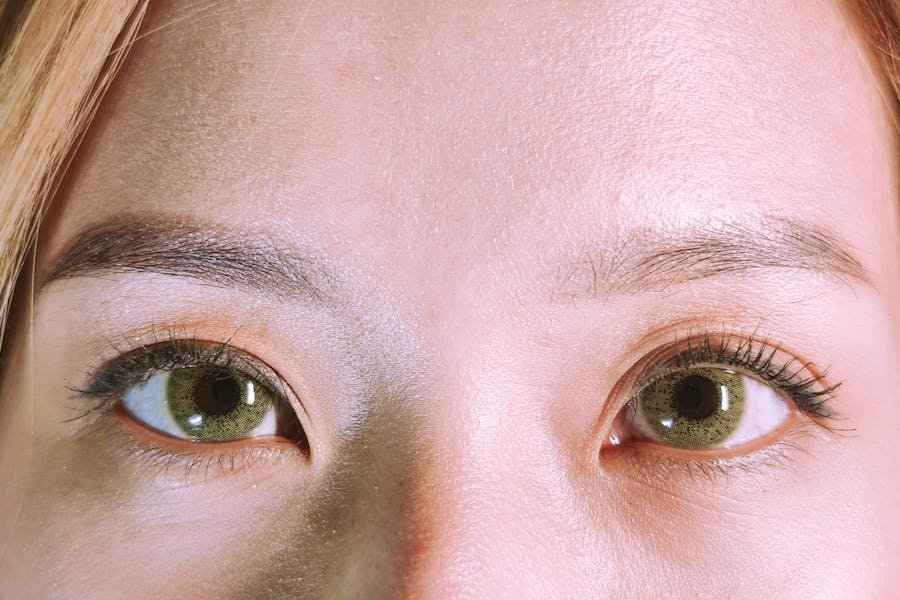How to Build an Eye-Friendly Environment at Home?
Building an eye-friendly home can really cut down on eye strain and just make life more comfortable. Most of us spend hours staring at screens or working in dim corners, often without realizing what it does to our eyes.
Small tweaks to lighting, screen placement, and even decor help prevent headaches, dry eyes, and that tired, gritty feeling you get from poor conditions. You don’t need to overhaul your whole house or buy fancy gadgets to make a difference.
With the right balance of sunlight, better artificial lighting, smart furniture placement, and some thoughtful color choices, you can turn any spot at home into a place that supports your eyes—without sacrificing style or function.
Core Elements of an Eye-Friendly Home
Protecting your eyes at home comes down to a handful of basics: lighting, ways to cut down strain, picking colors that go easy on your vision, and putting furniture where it actually helps, not hurts, your eyes.
Optimal Lighting Strategies
Lighting really sets the tone for how your eyes feel. Sunlight is still the gold standard, so pull those curtains back and park your desk or reading chair near a window if you can. Mix up your lighting—use ambient lights for the whole room and add task lamps for close-up work like reading or crafts. Adjustable desk lamps let you point light exactly where you need it, which is so much better than squinting under a ceiling fixture.
Pick the right kind of bulb. Warmer light (2700-3000K) feels cozy in bedrooms, while cooler light (4000-5000K) keeps you alert in offices or kitchens. LED bulbs help because they don’t flicker as much, which is a relief for tired eyes. Skip harsh overhead lights that throw shadows or bounce glare off your screens. Dimmers are a lifesaver—sometimes you want bright, sometimes you just don’t.
Age Related Macular Degeneration
Age-related macular degeneration (AMD) hits a lot of older adults, so it’s worth thinking about if you’re designing for aging eyes. As we get older, we just need more light to see well.
AMD-friendly home modifications can make daily life easier by incorporating high-contrast color schemes between walls and furniture, adding extra task lighting for reading or detailed work, reducing glare with smart window treatments, and placing magnifiers in key areas where visual support is most needed.
People dealing with AMD see better when there’s good contrast. Try using bold colors for stair edges, door frames, or even between plates and tablecloths.
Keep walkways lit up and clear. Motion-activated night lights are a game changer for nighttime trips—no need to flip on the big lights and blind yourself. Lamps built for low vision, with adjustable brightness and flexible necks, can really help too.
Reducing Screen Strain
Screens are everywhere now, but you can still protect your eyes if you’re smart about it.
The 20-20-20 Rule: Every 20 minutes, look at something 20 feet away for 20 seconds. It’s easy to remember and does more than you think to relax your eyes.
Keep screens about an arm’s length away, and make sure they sit just below your eye line. This setup takes pressure off your neck and keeps your eyes from drying out so fast.
To reduce eye strain, try adjusting your screen settings: enable night mode or blue light filters, match screen brightness to your room’s lighting, and increase text size and contrast for better visibility.
If someone in your house lives on their devices, consider anti-glare screens or blue-light glasses. And don’t forget to blink—sounds silly, but it really does help with dry eyes.
Choosing Eye-Friendly Colors and Materials
The colors you pick actually matter for your eyes. Medium tones are easier on the eyes than super dark or blindingly bright shades. Matte finishes on walls and furniture beat shiny surfaces, especially in rooms that get a lot of light or have screens everywhere. It just cuts down on glare, plain and simple.
Eye-friendly color combinations include soft neutrals like beige, gray, or taupe for large areas, paired with calming blues and greens. Use accent colors sparingly—following the 60-30-10 rule—to add interest without overwhelming the space.
Natural materials—wood, cotton, wool—soak up light instead of bouncing it around. They add texture and interest without making your eyes work overtime. Pick window treatments that filter sunlight but still let it in. Sheer curtains or adjustable blinds give you options as the light changes through the day.
Arranging Furniture for Visual Comfort
How you set up your furniture can make a surprising difference. Try not to put chairs or sofas facing straight into windows or bright lights—that glare gets old fast. Set up seating so people can see each other without craning their necks or squinting. Angling chairs at 90 degrees usually works better than lining them up face-to-face.
When it comes to screens, mount TVs perpendicular to windows to cut down reflections, and keep them at eye level so you’re not straining your neck. Reading nooks work best with light coming from behind and a little off to the side—no weird shadows, just good, even light. Keep walkways clear. Too much clutter forces your eyes to constantly refocus, which gets tiring fast.
Lifestyle Habits for Eye Wellness at Home
What you do every day matters as much as your setup. Tiny changes to your routine can really help your eyes in the long run.
Building Healthy Digital Device Routines
Setting some ground rules for device use keeps eye fatigue at bay. That 20-20-20 rule? It’s honestly worth repeating—it works.
Keep screens at arm’s length and just below eye level. Adjust the brightness so your screen blends in with the room; if it glows like a flashlight in the dark, it’s too bright.
Blue light filters on devices or computer glasses can help, especially if you’re up late scrolling. They’re not magic, but every little bit helps.
Incorporating Vision-Friendly Breaks
Give your eyes a real break from close-up stuff now and then. Even five minutes away from a screen can do wonders.
Try looking out the window and focusing on something far away, then switch to something closer. It’s like a mini workout for your eye muscles.
If you’re into it, gentle eye yoga can ease tension. Cover your closed eyes with your hands for half a minute, or do some slow, deliberate blinking to keep things moist.
Moving your body helps too. Walking around during breaks gets blood flowing, which is good for your eyes as well as the rest of you.
Promoting Indoor Air Quality to Reduce Irritation
Dry eyes can pop up when indoor air quality drops. Try keeping humidity between 40% and 60%—a humidifier really helps, especially in winter or if you’re always running the heat or AC.
Dust and allergens love to hang out on air vents, ceiling fans, and other sneaky spots, so clean those regularly to help your eyes out.
Indoor plants like spider plants and peace lilies do a surprisingly good job filtering air and adding a little moisture. Toss a few around your place, mainly where you spend the most time.
Skip smoking indoors and go easy on harsh cleaning products—they can send out fumes that’ll just make things worse. If the weather’s decent, crack a window now and then to let some fresh air roll in.
Share this content:














Post Comment